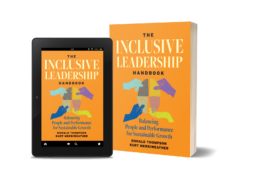A tight stomach, racing heart, waves of nausea, or shaky voice—the signs of anxiety are all too familiar. A single stressful event—a missed deadline, a tense exchange with a colleague, a lost client—can sometimes derail your day. Even after the surge of adrenaline subsides, the mind often keeps spinning for hours afterward.
When these moments become routine, they can undermine well-being, performance, and engagement. And for many, the causes of stress extend beyond the office. Amid global disruptions, feeling safe and secure is increasingly difficult.
Whether facing financial insecurity, threats to personal identity, or navigating global uncertainty, employees bring their whole selves to work. Stress is a constant presence, often ingrained in the culture of work.
Global Anxiety, Local Impact

Across industries and regions, employees report higher levels of burnout, exhaustion, and disengagement. U.K. data shows 85% of workers experience job-related stress. In Latin America and South Asia, economic instability, high workloads, and limited access to mental health support amplify everyday pressures. In Western Europe, work-life balance remains a top concern, while in North America, younger professionals report feeling overextended and under-supported. In Canada, Germany, and India, stress levels are significantly higher among Gen Z and Millennials, who are navigating career development alongside broader societal challenges.
Regardless of the source, when people are anxious, they are less likely to take creative risks, collaborate effectively, or remain engaged. Many employees are contending with personal and systemic challenges simultaneously. Rights that once felt secure—such as protections for LGBTQ+ individuals, reproductive autonomy, or access to healthcare—are under threat in many parts of the world. Institutions once viewed as stable are being tested. Every new crisis, policy change, or global conflict adds uncertainty to daily life.
Dr. Kennette Thigpen Harris, Chief Clinical Officer at Workplace Options, explains:
Leaders and managers don’t need to have all the answers, especially in a political or economic landscape where variables are constantly shifting. What they do need, however, is to communicate clearly, acknowledge challenges, and articulate a shared path forward.
Build a Foundation of Resilience
Leaders sometimes hesitate to engage with employees’ emotional challenges, believing they are personal issues and beyond their scope. But workplace anxiety is a business issue. It affects decision-making, collaboration, and retention. Leaders who acknowledge this reality and make space for meaningful dialogue can help their teams navigate stress more effectively. Psychological safety can be cultivated through inclusive leadership, empathetic communication, and consistent follow-through.
Leadership matters most during change and uncertainty. While some sources of anxiety may not directly impact a team’s day-to-day tasks, they can still create emotional strain. Leaders have an opportunity to nurture team cohesion, trust, and well-being by allowing space for employees to share their concerns before refocusing on the team’s tasks and business goals.
Practical Strategies for Managers and People Leaders

Psychological safety is a shared responsibility, but it starts with leadership. Managers shape how stress is perceived, discussed, and addressed across the team. The decisions leaders make, such as how they respond to challenges, offer feedback, and acknowledge emotional cues, can either foster inclusion or leave employees feeling unseen.
1) Normalize Mental Health Conversations
Acknowledge mental health as a legitimate topic of discussion. When leaders acknowledge that anxiety and stress are part of the human experience, it encourages openness. Start team meetings with a quick well-being check or share how you manage stress. This does not require sharing overly personal details, but it does require authenticity.
Leaders can also help employees recognize when anxiety is getting in the way of focus, collaboration, or performance. By holding space for emotions, without judgment or pressure to immediately resolve them, managers build trust and demonstrate that care and performance can coexist.
2) Clarify Priorities and Reduce Ambiguity
Ambiguity breeds anxiety. In fast-paced or crisis environments, priorities can shift quickly, leaving employees unsure about what matters most. Offer regular updates on team goals and individual expectations. Encourage employees to ask questions and clarify responsibilities. If priorities are changed unexpectedly, acknowledge the disruption and make space for employees to share their reactions. Collaborate on a plan to move forward and reinforce each person’s contribution to shared outcomes.
Donald Thompson, co-founder of The Diversity Movement, a Workplace Options Company, reminds leaders,
It is your responsibility to navigate the uncertainty and keep winning. It’s up to you to help your team minimize distractions, focus on what can be accomplished today,and keep moving forward.
3) Offer Flexibility Where Possible
Flexibility is one of the most effective ways to reduce stress, especially for employees managing caregiving responsibilities, health challenges, or time zone differences. Where feasible, give employees autonomy in how and when they complete their work. Be clear about deliverables and timelines, but open to different approaches.
Sustainable performance requires time to rest. Encourage teams to take breaks, use their leave, and disconnect outside of work hours. Unless it is truly urgent, avoid after-hours communication. Model these boundaries as a leader to show that rest is respected and valued.
4) Build a Culture of Recognition
Recognition helps employees feel seen and valued. Celebrate achievements both large and small. Ask team members how they would like to be recognized. Express appreciation in ways that are individually appropriate through public praise, written messages, or private conversations.
Also, make sure to recognize when employees are demonstrating resilience. If you know a project was particularly challenging or an employee is persevering through their work tasks while also adjusting to a personal stressor, make sure they know you see their hard work and dedication.
5) Strengthen Peer Support
Encourage team bonding and peer-to-peer mentoring. Consider rotating partners on projects to build new relationships or creating informal check-in groups. Employees often feel more comfortable confiding in peers before going to a manager. Peer support can be a powerful tool to reduce isolation and build emotional resilience within your team.
Empowering Employees to Navigate Stress

While leaders play a central role in shaping culture, employees can take active steps to manage stress and support themselves and others in the workplace.
1) Identify the Source
Take time to reflect: What is causing your stress? Is it a demanding workload, a strained working relationship, or unclear direction? Naming the source helps you decide whether to adjust your approach, seek support, or set new boundaries.
2) Focus on What You Can Control
Global events, organizational changes, and team dynamics can feel overwhelming. Direct your energy toward areas where you can make an impact. Break large projects into smaller, manageable steps. Schedule short breaks to transition mentally from one task to the next. Remind yourself of your personal and professional goals. Reflecting on one or two small wins each day can contribute to a sense of progress.
3) Communicate Your Needs
When stress begins to interfere with your focus or well-being, it is important to express what you need, whether it is a moment to reset, help with priorities, or space to process emotions. If you need a short pause to regroup, you might say, “I need a few minutes to reset, and then I will return to my tasks.”
When work demands feel unclear or overwhelming, use collaborative language to advocate for support: “To meet this deadline, I need help prioritizing these tasks,” or “Can we revisit expectations around this project?” Being direct and respectful builds mutual understanding and trust, helping you and your team stay aligned during stressful times.
4) Connect with Others
Isolation can intensify anxiety. Reach out to a trusted colleague to share how you feel. Chances are, you are not alone. Join an employee resource group or participate in a social committee to feel more connected to your workplace or organization. Even small moments of connection can provide emotional resilience to get through challenges.
5) Set Personal Boundaries
Define what balance looks like for you. This might mean logging off at a consistent time, turning off notifications outside work hours, or scheduling breaks throughout the day. Communicate your boundaries clearly and respectfully to ensure everyone on your team understands and can anticipate when to contact you.
If your anxiety is coming from broader uncertainty, consider how personal boundaries can help. Set time limits on scrolling social media. Turn off breaking news alerts for apps. Giving yourself permission to disengage is not about ignoring current events but about protecting your mental health. Take time to engage in activities that calm you or bring you joy, like reading, connecting with loved ones, or spending time in nature.
6) Seek Professional Support
Seeking professional support does not have to wait until anxiety becomes overwhelming. Many organizations offer mental health resources, employee assistance programs (EAPs), or confidential counseling services. Counselors and therapists can help reduce your baseline stress, suggest coping strategies, and improve your overall sense of confidence and resilience. Do not wait until you feel unable to cope—you do not have to reach a breaking point to deserve support. That is not good for you, your loved ones, or your workplace.
Creating Stability in Times of Uncertainty
The workplace can—and should—be a source of stability when everything else feels uncertain. Though workplace anxiety affects people across roles, industries, and geographies, with intentional leadership and empowered employees, it is possible to create environments where stress is acknowledged, addressed, and managed constructively – without stigma.
Anxiety may be a natural response to today’s complex world, but it does not have to define the work experience. Through empathy, clear communication, and shared responsibility, organizations can build the kind of trust and support that employees need to thrive.
In today’s workplace, psychological safety is no longer optional—it’s essential for delivering business results. Teams that feel safe to speak up, share ideas, and admit mistakes without fear of negative consequences drive innovation, collaboration, and productivity. Connect with the Center for Organizational Effectiveness to learn more about how we help organizations identify the key threats to team cohesion and provide the blueprint needed to create targeted, data-driven solutions that build sustainable workplace cultures.
Andy DeRoin is a project manager for the Product and Innovation department at The Diversity Movement. They are a diversity and inclusion educator with a background in social work and a passion for long-term, diversity-oriented initiative development, advocacy, and strategic alignment with organizational goals. Connect with Andy on Linkedin.




